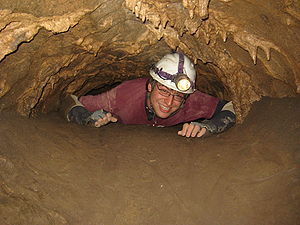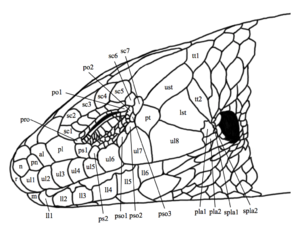Difference between revisions of "Andrew Frank"
Andrew Frank (Talk | contribs) (→About Me) |
Andrew Frank (Talk | contribs) |
||
| Line 1: | Line 1: | ||
[[Category:EEB Graduate Students|Frank]] | [[Category:EEB Graduate Students|Frank]] | ||
[[Image:Andrew_Frank_Caving.jpg|thumb|300px|right|Andrew caving in the karst of West Virginia]] | [[Image:Andrew_Frank_Caving.jpg|thumb|300px|right|Andrew caving in the karst of West Virginia]] | ||
| − | [[Image:AndrewHeadScales.png|thumb|300px|right|Head scales of <i> | + | [[Image:AndrewHeadScales.png|thumb|300px|right|Head scales of <i>Plestiodon skiltonianus</i>, illustration by Andrew Frank]] |
==Contact Information== | ==Contact Information== | ||
| Line 19: | Line 19: | ||
Major Advisor: [http://jockusch.eeb.uconn.edu/ Elizabeth Jockusch] | Major Advisor: [http://jockusch.eeb.uconn.edu/ Elizabeth Jockusch] | ||
<br/> | <br/> | ||
| + | |||
| + | ==Research Interests== | ||
| + | I am interested in answering evolutionary questions by leveraging molecular data in novel ways. My current graduate work focuses on three core interests: speciation and population genetics, systematics and taxonomy, and deep-level phylogenetics. Broadly speaking, I am interested in questions about... | ||
| + | * Causes and identification of non-bifurcating speciation in North American skinks | ||
| + | * Phenotypic changes in relation to processes of speciation, especially those associated with a transition to a cave-dwelling phenotype | ||
| + | * Resolving differences between morphological and molecular phylogenies of Squamata | ||
==About Me== | ==About Me== | ||
| Line 28: | Line 34: | ||
After my two-year commitment to Teach for America, I enrolled as a graduate student at the University of Connecticut, where I am currently pursuing research on parallel speciation and the molecular systematics of lizards. | After my two-year commitment to Teach for America, I enrolled as a graduate student at the University of Connecticut, where I am currently pursuing research on parallel speciation and the molecular systematics of lizards. | ||
| − | |||
| − | |||
| − | |||
| − | |||
| − | |||
| − | |||
==Teaching== | ==Teaching== | ||
Revision as of 16:24, 10 April 2014
Contact Information
Office: BPB 322
Phone: (845) 728-6551
Mailing Address: Department of Ecology and Evolutionary Biology
University of Connecticut
75 N. Eagleville Road Unit 3043
Storrs, CT 06269
Education
PhD Student, University of Connecticut, Ecology and Evolutionary Biology 2013-present
Major Advisor: Elizabeth Jockusch
Research Interests
I am interested in answering evolutionary questions by leveraging molecular data in novel ways. My current graduate work focuses on three core interests: speciation and population genetics, systematics and taxonomy, and deep-level phylogenetics. Broadly speaking, I am interested in questions about...
- Causes and identification of non-bifurcating speciation in North American skinks
- Phenotypic changes in relation to processes of speciation, especially those associated with a transition to a cave-dwelling phenotype
- Resolving differences between morphological and molecular phylogenies of Squamata
About Me
My initial interest in biology took root in the incredible complexity of the very small. As an undergraduate at American University, I explored changes in morphology in the freshwater amphipod Gammarus minus as it invaded cave environments in West Virginia. Caving in the valleys of West Virginia, doing faunal surveys, and collecting amphipods created a passion and sense of discovery for the biological work I was completing.
My amphipod research experience helped me continue my scientific work as an undergraduate at the Smithsonian National Museum of Natural History. There, I worked with Dr. Jon Norenburg in an attempt to differentiate two species of marine Nemertean worms, Lineus ruber and Lineus viridus, using the molecular barcode gene, COI. Working at the Smithsonian created a burgeoning attraction to molecular systematics, and strongly influenced my desire to pursue graduate work in this field.
In my senior year at American, I applied and was accepted to Teach for America. For the next two years of my life, I became dedicated to the scientific education of 240 high school freshman. I took the reigns of a freshman level science and engineering course at the Academy of Engineering and Green Technology (AoEGT) in Hartford, CT. At AoEGT, I became invested in producing a hands-on curriculum that drove curiosity and captured interest, and started creating projects using under-used resources in the school.
After my two-year commitment to Teach for America, I enrolled as a graduate student at the University of Connecticut, where I am currently pursuing research on parallel speciation and the molecular systematics of lizards.

